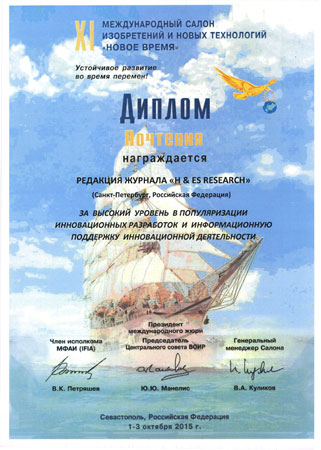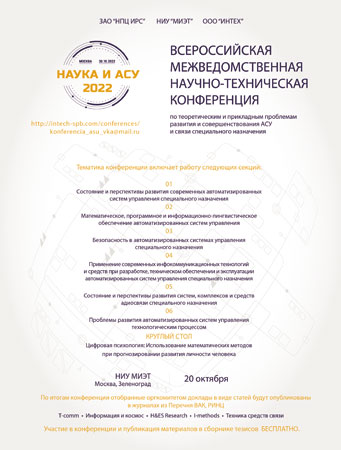System of production and socioeconomic relations are characterised by active use of radio communications for various purposes. The increase in the number of Radiocommunication services, the workload and the limited radio spectrum as a natural resource causes the need for its effective use.
The article presents General methods for simulation of electromagnetic environment, which is understood as the totality of electromagnetic radiation, generated by a large number of mobile objects, with established radioelectronic means, are combined in the system: communication, data communication, electronic security, navigation, etc. Assessment of electromagnetic environment is conducted by the radio monitoring services in the interests of radio spectrum allocation, frequencyterritorial and territorial and energy planning. Basic parameters of electromagnetic environment, such as intensity, power and density of radiation are determined by the functioning of multiple mobile objects with the established electronic means. However, its dynamics at the point of reception, expressed as a change in the number and radiated power of a plurality of mobile objects with established radioelectronic means in full it is impossible to Express quantitative characteristics. Simulation of spatiotemporal and frequencyenergy performance of a mobile object with mounted radioelectronic means is largely determined by the quality indicators. The offered approach involves the modelling of mobile objects with the established electronic means and the mathematical description of the various modes of their operation and spatial distribution. Features of functioning of radioelectronic means are considered from the perspective of continuousdiscrete (hybrid) systems and formalized presents a hybrid machine. Under a hybrid automaton is a system of navigation in which each vertex corresponds to a region of the state space of the system, describing continuous behavior between events, leading to their shift. Considered a generalized model of radioelectronic means on a mobile object, changing modes and conditions determined by the discrete transitions, the simulation of the applied radio signals is described by continuous processes. Location in space, the total number of radioelectronic means, change modes and parameters of their work are encouraged to describe on the basis of logicotemporal scenario representing a causal network in which a sequence of vertices interpreted as a sequence of actions that must be implemented towards the ultimate goal.



















